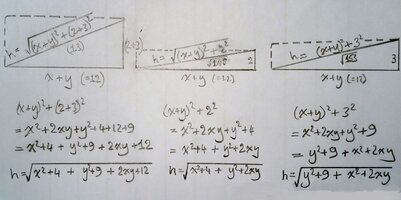Steven G
Elite Member
- Joined
- Dec 30, 2014
- Messages
- 14,379
Possibly this problem should be in thew beginning algebra sub forum as I was told that a middle school student should be able to solve this. (Where is Khan when you need him?!)
Minimize \(\displaystyle \sqrt{x^2+4} + \sqrt{y^2 + 9}~ subject~ to~ x+y=12\)
No Calculus allowed.
Minimize \(\displaystyle \sqrt{x^2+4} + \sqrt{y^2 + 9}~ subject~ to~ x+y=12\)
No Calculus allowed.

